Square Editor Philippa Lee talks to Travis Simpkins, the artist taking the Masonic world by storm.
This article originally featured in the print edition of The Square, June 2018 (Vol 44 No. 2) (back copies are still available from Lewis Masonic)
Ed. Your passion for both art and history is obvious but which came first and what is your background in both – did you train as an artist/art historian? Can you describe your technique and mediums used?
TS: I’ve been passionate about history for as long as I can remember. As a kid, I wanted to be an archaeologist.
I was born in Massachusetts, but spent much of my childhood in an area of Arizona that has a large number of Anasazi ruins scattered among the cliffs and hillsides.
I enjoyed exploring those ancient rooms and experiencing a direct connection with history. However, as I got older, it became apparent that archaeology wasn’t the non-stop excitement one sees in the Indiana Jones movies.
I’ve always had some innate, natural artistic talent and it just came easy to me. So, when it was time to choose a path in college, I decided to focus on studio art.
I had a full range of studies in artistic practices at Anna Maria College in Paxton, Massachusetts. I received my BFA degree there. Then, afterwards, I benefitted from the tutelage of pastel artist James Frederick Mueller in Arizona.
Jim taught me the most valuable skill I have in my repertoire: the ability to create convincing portraits from photographs. My most well-known works are charcoal and chalk on toned paper, but I create oil paintings as well.
My interest in history has never faded, though, and I’ve been fortunate to find work in museums which allows me to combine my artistic and historical inclinations.
ED. You’ve become a bit of a celebrity in the Masonic world recently – it seems that many distinguished Brethren (both living and dead) in the US and worldwide have been immortalised by you on canvas. Having looked through your online portfolio, I recognise quite a few modern fraternal faces amongst the historical ones. Who was your first Masonic commission?
TS: I’ve made so many Masonic-themed portraits over the past three years that I can’t really recall the first one.
Early on, Christopher Hodapp, Arturo de Hoyos, Michael R. Poll, Robert L.D. Cooper, Tim Wallace-Murphy and other well-known authors utilized my charcoal portraits of them as their Facebook avatars and the popularity of my work within Masonic circles has grown very rapidly since then.
The portraits have appeared on the backs of books by several Masonic authors and have been featured in the publications of various Grand Lodges, Scottish Rite Valleys and research society journals.
The artwork has been mentioned on popular Masonic podcasts and YouTube channels. Framed originals have been presented to honorees at celebratory events and, more solemnly, have been presented to widows at memorial services.
I still take on a lot of private commissions for individuals, but I also create portraits steadily for numerous Masonic groups, appendant bodies and Grand jurisdictions.
I create oil paintings of Grand Masters for both the Grand Lodge of Massachusetts and the Grand Lodge of New Jersey.
The GL of New Jersey also hired me to create artwork for the cornerstone dedication ceremony of the United States Coast Guard Memorial which took place in April [2018] of this year.
However, my most involved projects are with the Supreme Council, 33° of the Ancient Accepted Scottish Rite, Northern Masonic Jurisdiction, and U.S.A.
In addition to creating an oil painting of the Sovereign Grand Commander, I am also tasked with creating charcoal portraits of all Active and Emeritus Members of the Supreme Council.
That particular assignment totals over 100 portraits. I also created charcoal portraits of departed members of Supreme Council for the necrology at their 2017 Annual Meeting which was held in Rochester, New York last August.
I’m also a regular contributor on the Midnight Freemasons blog. So I need to produce material for that, both in terms of writing and including related imagery.

Chris Hodapp, author of Freemasons for Dummies © Travis Simpkins

Arturo de Hoyas – Masonic scholar and author © Travis Simpkins
ED. When did you become a Freemason and what inspired you to join the organisation and how do you see the future of the Craft?
You very kindly produced the beautiful image of the ‘Three Graces’ for [The Square Magazine] cover and your craft as an artist is well-utilised within the Craft itself.
Is this something you would like to see more of in Freemasonry – members sharing their skills and crafts?
This is something we don’t often see aside from those who are historians/academics and/or writers.
Do you think encouraging brethren to demonstrate or teach others in what we would call the ‘liberal arts’ would be a useful tool in Freemasonry – a form of Masonic education, but also good fun and a chance to learn a new skill or craft?
TS. I petitioned in 2015 and received the three Degrees at Morning Star Lodge in Worcester, Massachusetts between January and March of 2016.
It was history that drew me to the Craft initially. One of the museums in which I work had a set of 18th Century silver Masonic jewels created by Paul Revere on display.
Looking into the history of those objects, and realizing that the Lodge from which they originated (Morning Star Lodge) was still operating and located nearby, led me to submit a petition.
I also have a fascination with Egyptology. Various Masonic connections and themes related to Ancient Egypt, aesthetic and otherwise, intrigued me as well.
My work at museums in Boston has fostered within me an intrigue for both Colonial and Ancient history. Freemasonry seemed to encapsulate a lot of those interests.
In all honesty, when joining, I didn’t assign much thought to the idea that my artistic talent would be utilized within the Craft at all, never mind how much in demand my skills have become.
But I am truly grateful for the attention my work has received. I think the success I’ve experienced is evidence that there is definitely a place and need for the arts in Freemasonry, from the Blue Lodge all the way up to the Grand Lodge level.
With regards to Brethren teaching and sharing their skill sets, there is certainly room for that.
Masonic education has become a big topic. Art relies heavily on natural talent, but basic artistic skills can be taught to and enjoyed by everyone.
One of Freemasonry’s primary goals is self-improvement, and awakening one’s creative spirit is a good starting point to seeing light anew.
Beyond aesthetics, I’d really like to see a revival of music at Masonic events.
I visit a lot of Masonic buildings and many of them have pipe organs that no longer work due to neglect and lack of use. Music just adds so much to the experience.

ED. Can you tell us about your involvement with the various museums (Isabella Stewart Gardner and Worcester) and how this has evolved worldwide?
TS. I have maintained an overlapping involvement with several museums throughout my artistic career. Currently, I work on an ongoing project for the Isabella Stewart Gardner Museum in Boston.
I’m tasked with creating assigned sketches of works in the collection, which the museum then presents as gifts to noteworthy recipients at events throughout the year.
I also serve as an Art Advisor with the Massachusetts Senate, working to coordinate exhibits of student artwork at the Massachusetts State House.
I am a staff member of the Worcester Art Museum and I am a Docent at the Worcester Historical Museum.
My artwork is included in several museum collections as well. Most recently, my portrait of Harry S. Truman wearing Masonic regalia was acquired by the Harry S. Truman Presidential Library & Museum in Independence, Missouri.
My portrait of Revolutionary War General Henry Knox is on display at the Knox Museum as part of a project coordinated by the Grand Lodge of Maine.
Last year, I sent a portrait of Albert Pike off to a collector in England, and I’m told that it will eventually be donated to the Warrington Museum of Freemasonry.
In 2015, the Worcester Historical Museum commissioned me to create a series of portraits and they were displayed alongside works by Colonial-era artist Gilbert Stuart, which was quite an honour.

Albert Pike in Masonic Regalia, 1865 Brady-Handy photograph collection, Library of Congress, Prints and Photographs Division.
IMAGE LINKED: Library of Congress, Prints and Photographs Division Attribution 4.0 International (CC BY 4.0)
ED. Aside from the Masonic portraits, your gallery includes a myriad of recognisable and famous faces: movie stars, historians, authors and of course many figures from history.
Being a fan of the band Crash Test Dummies, I immediately noticed the portrait of Brad Roberts!
TS. I’ve been a professional artist for 20 years and I’ve only been a Mason for 2 years, so the majority of my work has been non-Masonic.
Work tends to come in waves of related subjects. Several years ago, much of my artwork clientele centred around musicians and other people in the entertainment business.
I made the portraits depicting Brad Roberts of Crash Test Dummies back then, around 2011 or so, and they continue to be used periodically.
Two of the portraits of Brad were used on posters for a concert he performed in Ontario, Canada just this year.
I created a charcoal portrait of author Graham Hancock back in 2015 and he still uses it to promote his books and lectures. He is a kind, gracious man with intriguing insights and he has been very helpful in promoting my work.
The portrait serves as Graham’s Facebook avatar on his author page and the image has appeared on ads for his lectures at various venues, including the National Arts Club in New York City.
As a professional portraitist, the nature of the work entails dealing with different people from all backgrounds and lifestyles.
I’ve worked with everyone from vaudeville performers and stand-up comedians to FBI Agents and Roman Catholic clergymen.
Artwork is what I do for a living, and from a strictly business standpoint, I will work for anyone. I’m paid to observe, not to judge.
I’m happy to keep an open mind and I enjoy the new experiences found in an eclectic range of subjects.

Graham Hancock, Author © Travis Simpkin
ED. Art Crime Illustrated [former website] is this linked to the work you do in conjunction with the IFCPP in relation to art theft, preservation and archaeological ethics?
TS. My interests in Art and History have led to a combined concern about the future wellbeing of cultural treasures. A passionate field of research for me has been that of Art preservation and protection.
Art Crime is an umbrella term that covers theft, forgery, fraud, vandalism and looting of archaeological sites through unauthorized excavations.
These are all gritty but crucial issues. By looking at past robberies, we can look to improve security protocols to ensure the safety of art in established collections.
By learning the methods that forgers use to defraud prospective buyers, we can both save investments and help preserve the integrity of an artist’s proper legacy.
By working to protect and regulate archaeological digs, we can gain an accurate and unmolested understanding of human history.
ED. Last but not least – can you let us know what/who you are working on at the moment?
TS. Much of the work I have now is long-term and ongoing. I will continue working on portraits for the Supreme Council, 33°, NMJ over the coming years, both the charcoal sketches as well as an oil painting of David A. Glattly, the Sovereign Grand Commander.
I have to complete an oil painting of M.W. Paul F. Gleason, Grand Master of the Grand Lodge of Massachusetts, before the end of his term in 2019.
I’ve already completed one oil portrait of M.W. Roger B. Quintana, Grand Master of the Grand Lodge of New Jersey, but I’m working on a second version for his Mother Lodge.
In addition, I also have ongoing work with private commissions, assignments for the Isabella Stewart Gardner Museum and the Massachusetts Senate.
I am perpetually busy, but I am also always looking forward to taking on the next project.

David A. Glattly, Sovereign Grand Commander, Scottish Rite Freemasons © Travis Simpkins

M.W. Paul F. Gleason, Grand Master of the Grand Lodge of Massachusetts © Travis Simpkins
To see more of Travis’ work, visit http://www.tsimpkins.com/
Article by: Philippa Lee. Editor

Philippa Lee (writes as Philippa Faulks) is the author of eight books, an editor and researcher.
Philippa was initiated into the Honourable Fraternity of Ancient Freemasons (HFAF) in 2014.
Her specialism is ancient Egypt, Freemasonry, comparative religions and social history. She has several books in progress on the subject of ancient and modern Egypt. Selection of Books Online at Amazon
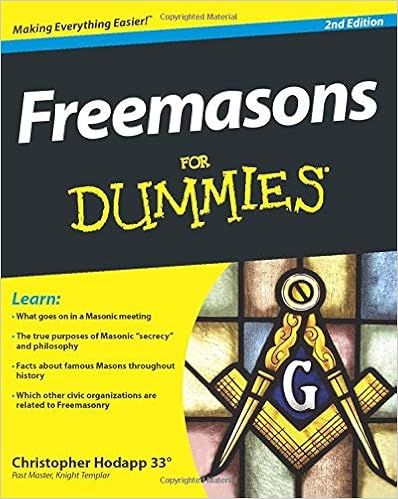
Freemasons For Dummies
By Christopher Hodapp
Take the mystery out of the Freemasons
Fascinated by Freemasons? Freemasons For Dummies is the internationally bestselling introduction to the Masons, the oldest and largest “secret society” in the world. This balanced, eye-opening guide demystifies Freemasonry, explaining everything from its elaborate rituals and cryptic rites, to its curious symbols and their meanings.
With new and improved content, including updated examples and references throughout, this new edition of Freemasons For Dummies provides the most straightforward, non-intimidating guide to the subject on the market.
• Updated expert coverage of the basic beliefs and philosophy behind Freemasonry
• Revised information on the history of the society, including updates concerning its founding, famous historical members, and pivotal events
• New coverage devoted to the recent influx of younger membership
• The latest and ongoing controversies and myths surrounding Freemasonry
• The role of women in a Masonic organization, including opportunities for women to participate in Freemasonry
• The effects cultural and political changes and worldwide events are having on the organization
If you’re intrigued by the mystery that surrounds the Masons, get ready to learn the facts about this ancient order in Freemasons For Dummies.
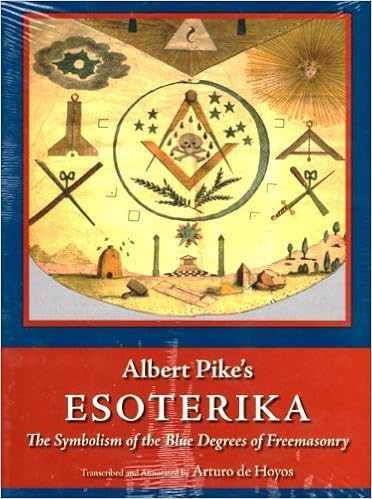
Albert Pike’s Esoterika – The Symbolism of the Blue Degrees of Freemasonry
by Arturo De Hoyos
Contains the complete text of Albert Pikes never-before-published esoteric study of the symbols of Blue Lodge Degrees. Subjects include:
“The Compasses and the Square,” “The Weapons and Blows of the Assassins,” “The Three Grips,” “The Substitute for the Masters Word,” “The 47th Problem of Euclid,” “The Truth,” “Is the Cable-tow a Symbol?,” “Corner Stones,” “The Ladder of Jacob,” “Tubal Cain,” “Shibboleth,” and “Solomon and Hiram.”
In addition to the above, Ill. de Hoyos added five appendices:
[1] Parallels to the Symbolism of the Blue Degrees,
[2] A Letter Touching Masonic Symbolism,
[3] Pikes Dependence on Other Sources,
[4] The Faith of Albert Pike, and
[5] Four Valuable Exposs.
The latter section includes the complete texts of “A Masons Examination” (1723), “The Grand Mystery of Free Masons Discovered (1725), Samuel Prichards “Masonry Dissected” (1730), and “Jachin and Boaz” (1762).
The editors critical notes help the reader follow Pikes dissertation and provide additional documentation.
Clothbound with gilded cover and decorative dust jacket; 501 pages; illustrated, with exhaustive index.

The Red Triangle: The History of the Persecution of Freemasons
by Robert Cooper
For at least two hundred years, Freemasonry has been subjected to witch-hunts.
Conspiracy theories abound in which Freemasons manipulate whole governments, incite revolution, control the world banking system, and will engage in any activity, even murder, to advance their aims.
Even today, Freemasonry is still seen a legitimate group to attack on the grounds of politics, religion and conspiracy theories. The Red Triangle uncovers the reality of this persecution of Freemasons from its first manifestation soon after people became aware of their existence in the seventeenth century.
Attacks and persecution took place in many countries as Freemasonry spread around the world?there was even an anti-Masonic political party in nineteenth-century America that stood against Masonic politicians.
In complete contrast, Freemasonry and the American Civil War provides a fascinating inside view of the ethos of Freemasons in extreme, life-threatening, situations when Freemasons offered assistance to their fellow Freemasons on opposite sides during the war.
Recent Articles: in meet the author series
 Meet The Author - Albert Mackey As a contributor to the literature and science of Freemasonry, Doctor Mackey's labours have been more extensive than those of any other in America or in Europe. |
 Philippa Lee talks Masonry and metaphysics with Ben Zion, the author of two must-have books on esoteric Freemasonry. |
 Meet The Author - Robert Freke Gould A brief look at his life, Gould was a soldier, barrister and prominent Freemason and Masonic historian. He was also one of the founders of Quatuor Coronati Lodge in 1886 |
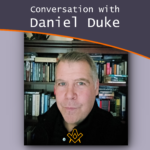 In Conversation with…Daniel Duke Author Daniel Duke talks to Philippa Lee about his new book 'Secret History of the Wild, Wild West' the third in a series on Outlaws, secret societies and hidden treasure. Dan is the great-great grandson of the infamous Jesse James, and the definitive authority on the subject. |
 Mike's Masonic Walks and Talks Mike Neville offers walks and talks primarily around London, based on his vast knowledge of the area and his specialist subjects, which cover all aspects of Masonic history, and some unique insight into the more shady side of 'Crime and the Craft'. |
 Darren Lorente-Bull is the author of 'The Other Brotherhood: When Freemasonry Crossed the English Channel' and five other books. Here he talks to Philippa Lee about his beliefs, his Freemasonry, and books. |
 Meet The Author - Angel Millar This month I am delighted to interview Angel Millar – author of five books on Freemasonry, esotericism, and world spiritual and initiatory traditions. |
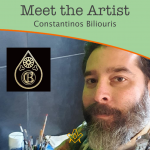 Constantinos Biliouris is a Greek Artist and brother from the Grand Lodge of Greece who creates a range of hand painted masonic aprons. |
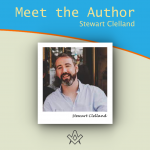 This month Editor Philippa Lee meets Stewart Clelland the author / translator of The Green Book of The Élus Coëns |
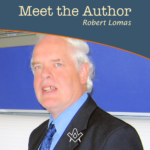 Editor Philippa Lee interviews well-known Masonic author Dr Robert Lomas |
 This month we feature ten of our recommended Masonic authors ranging from the early 1900s to the modern day, and we offer our 'Square choice' of their books. |
 We talk with ‘Brother Hogarth’ who is currently writing a series of articles featuring the Masonic art of William Hogarth. |
 If you would like your work to be featured in The Square, please take a look at our submissions guidelines and send any ideas or contributions to the Editor for our consideration. |
 A slight deviation from our usual 'Meet the Author' theme but equally as interesting, we have a 'Portrait of an Artist' - Travis Simpkins - the man capturing the likeness of Freemasons worldwide! |
 This month we Meet the Author: historian and biographer Kevin Shillington. |
 This month in 'Meet the Author' we look at the life and work of Carl H. Claudy, a prolific Masonic author who believed that Masonic education is the foundation for the Fraternity. |
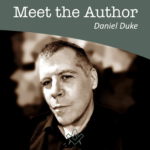 Daniel Duke, the great-great grandson of Jesse James, grew up surrounded by stories of lost outlaw treasures. |
 Stephen Dafoe - numerous books on the Knights Templar, and Morgan: The Scandal That Shook Freemasonry. |
 Paul Sparks – author of A Guide for the Masonic Treasurer |
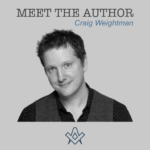 Craig Weightman – author of A Journey in Stone |
masonic knowledge
to be a better citizen of the world
share the square with two brothers

click image to open email app on mobile device









